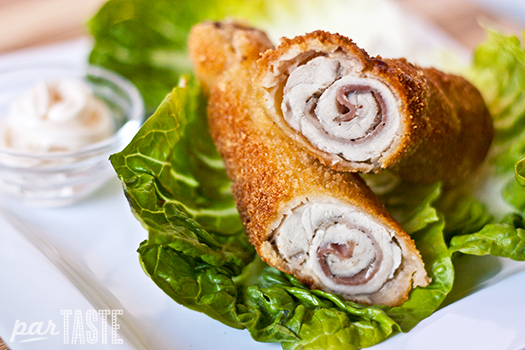Hallmarked by its Arabic and Jewish influences, Cordovan cuisine is bursting with flavor and is the perfect summation of the region’s cultural heritage. The Cordovan recipe book contains hundreds of dishes all waiting to be sampled and savored, which can certainly make the task of picking a meal feel like a herculean feat—and while there are wrong choices in the world of gastronomy—no one can truly say that they tasted Cordovan cuisine without trying at least one of these regional classics!
:max_bytes(150000):strip_icc():format(webp)/salmorejo-XL-RECIPE0917-7b679ff299ce43df9128c7f4a181be4d.jpg)
Salmorejo
A chilled tomato-based cream soup that is typically made with olive oil, hard-boiled eggs, and ham, and thickened using a rustic white bread. Traditionally, the bread used for Salmorejo is Pan de Telera, and the tomatoes are none other than Andalusian tomatoes. This savory soup is a blend of sweet and bold flavors, that represents a common trend in Andalusian cuisine and showcases the Mozarabic influence on the Gastronomy of this Spanish region. Other dishes with similar flavor profiles include orange and cod salad, and artichokes “a la montillana”.

Flamenquín
For the carnivores amongst us, many will find that the flamenquín is a dish well suited to their palates. Flamenquin translates to “small flamenco dancer”, according to Chef Jose Pizzaro, and is a salty, savory, and crispy delight; filled with Serrano ham it is a breaded rolled pork filet that is served fried. However, if pork is not to one’s taste, the Cordovan cuisine also features dishes that include oxtail, honey-roasted lamb, and local wild game that are all available to enjoy depending on the locale.

Alfajores
Last but certainly not least, a sweet addition to the Cordovan recipe book, Alfajores are a must-try dish for anyone and everyone visiting the Province of Cordoba. A cookie-like pastry, Alfajores are made by creating a jam filling with honey, almonds, and sesame seeds that is sandwiched between two dense and flaky butter cookie-like biscuits. The use of honey, almonds, and sesame, all fillings common in Arabic and Middle Eastern deserts, is an imprint of the region’s Arabic and Jewish past. This influence can be seen in other desserts such as Pastel Cordobés, a fried dough pastry that utilizes a jam filling as well.
While these dishes are just entry points into the world of the Cordovan cookbook, for more recipes and information please consider visiting the further information page. For further information on the dishes mentioned in this article please visit the Turismo de Cordoba website, located here.
